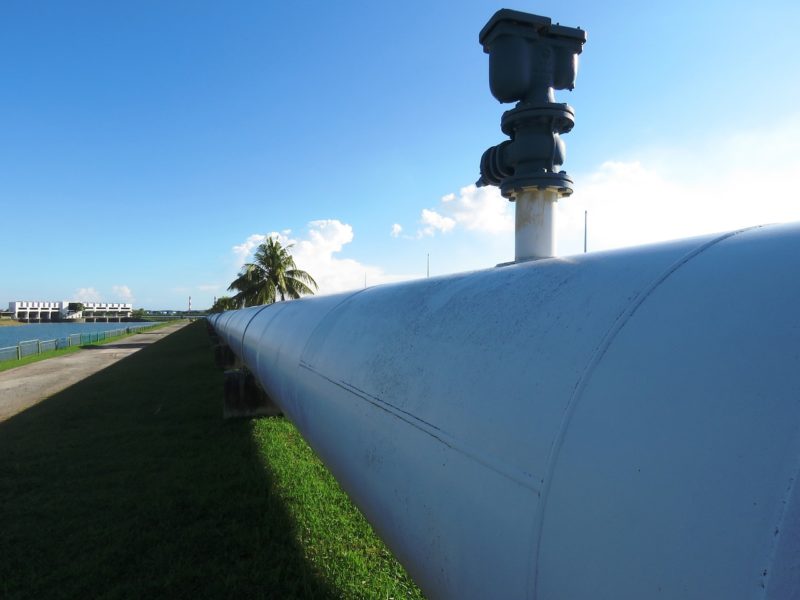6 Ways to Reduce the Environmental Impact of Pipelines

Pipelines are, undoubtedly, the safest method for transporting oil, especially when compared to the most common alternative, freight trains. These freight trains spill their contents far more frequently than pipelines, and are also much more prone to exploding, confirming their reputation as a hazard not just to the environment, but also to people.
In fact, a recent study conducted by the University of Alberta found that pipelines produce 61 to 77 percent less greenhouse gas emissions compared to rail.
That being said, there are still environmental issues surrounding the use of pipelines, and it is up to both the pipeline planners and the general public to ensure that these issues are dramatically reduced. As pipelines continue to spread into new areas and affect more property owners, anxieties surrounding their environmental impacts are growing.
Here are six ways to reduce the environmental impact of pipelines:
1. Choose a route away from critical features.
When selecting a route for a new pipeline, it’s important to listen to stakeholders and keep in mind construction issues, terrain and soil conditions. Moreover, planners need to understand all the relevant issues and balance all of the environmental factors.
For this reason, a pipeline route must be positioned away from critical features such as water wells, residences, schools, cave openings, and any other delicate environmental, social or geographic hallmarks.
Additionally, pipelines should not be designed to cross bodies of water and other wetlands as much as possible.
2. Include noise reduction devices.
Usually, environmental consultants will collaborate with pipeline firms throughout the preparation and construction of new pipeline projects. Such partnership is done to recognize the least environmentally problematic courses, petition for the necessary permits, and aid in both the installation and post-construction maintenance exercises.
But there is more that can be done.
As technology develops, planners and operators are able to choose devices that are equipped with noise-reducing mechanisms. Otherwise, the large compressors, pumps and engines that compressor stations utilize can cause a massive amount of noise pollution that can affect nearby wildlife and communities.
3. Reduce heavy truck movements.
A large percentage of the environmental devastation that occurs as a result of pipeline construction is from the vast amount of truck movements that happen when moving items to and from the pipeline location.
Two ways to decrease this devastation include:
- Devise plans that reduce frequent truck movements.
- Include the making of pipelines where they are to be deployed.
Planners should always be searching for ways to reduce the environmental impacts of their industry, i.e. the shipping of unfinished pipe segments from pipe mill to coating plant.
4. Utilize environment-friendly technology.
In 2018, in addition to noise-reducing devices, many other environmentally friendly technologies can be utilized during the pipeline process.
For example, inflatable packers that render an excellent seal against grout bleed, and are useful for a number of applications including environmental remediation, helping ensure that below-the-ground active sites have minimum to no impact on surface operations.
5. Supplement temporary areas for threatened and endangered species.
One of the most important aspects to keep in mind are the threatened and endangered species that are affected by the construction of new pipelines. In these areas, additional protection must be guaranteed.
Pipelines and compressor stations must be located in areas that bypass recognized nesting or breeding locations or locations of populations of vulnerable or endangered species.
Furthermore, pipeline construction projects should be suspended during certain times of the year, to honor when species are mating, nesting, or rearing their offspring.
6. Facilitate rapid restoration.
After a pipeline has been installed and hydro tested, workers should restore pipeline corridors immediately.
Additionally, when hydro testing, engineers should produce controls and structures for controlling the considerable volume of water discharged from the pipe at the completion of the analysis.
However, just because the construction of the pipeline is complete, it doesn’t mean the environmental effects have been entirely avoided. Over the next few years, at varying intervals, pipeline sites will need to be monitored to ensure that nothing is being adversely affected and that the surrounding areas are being maintained.
Would you like to receive similar articles by email?




